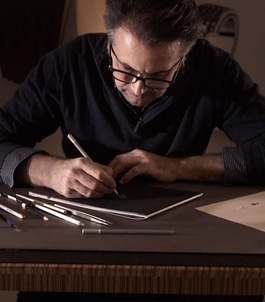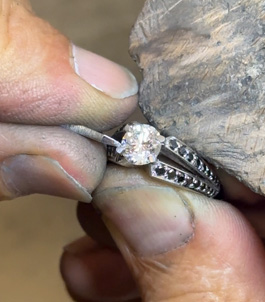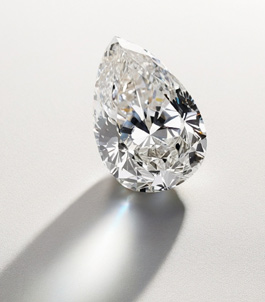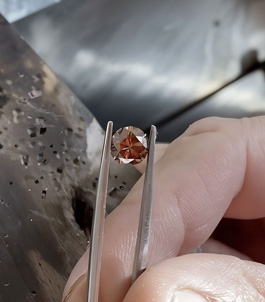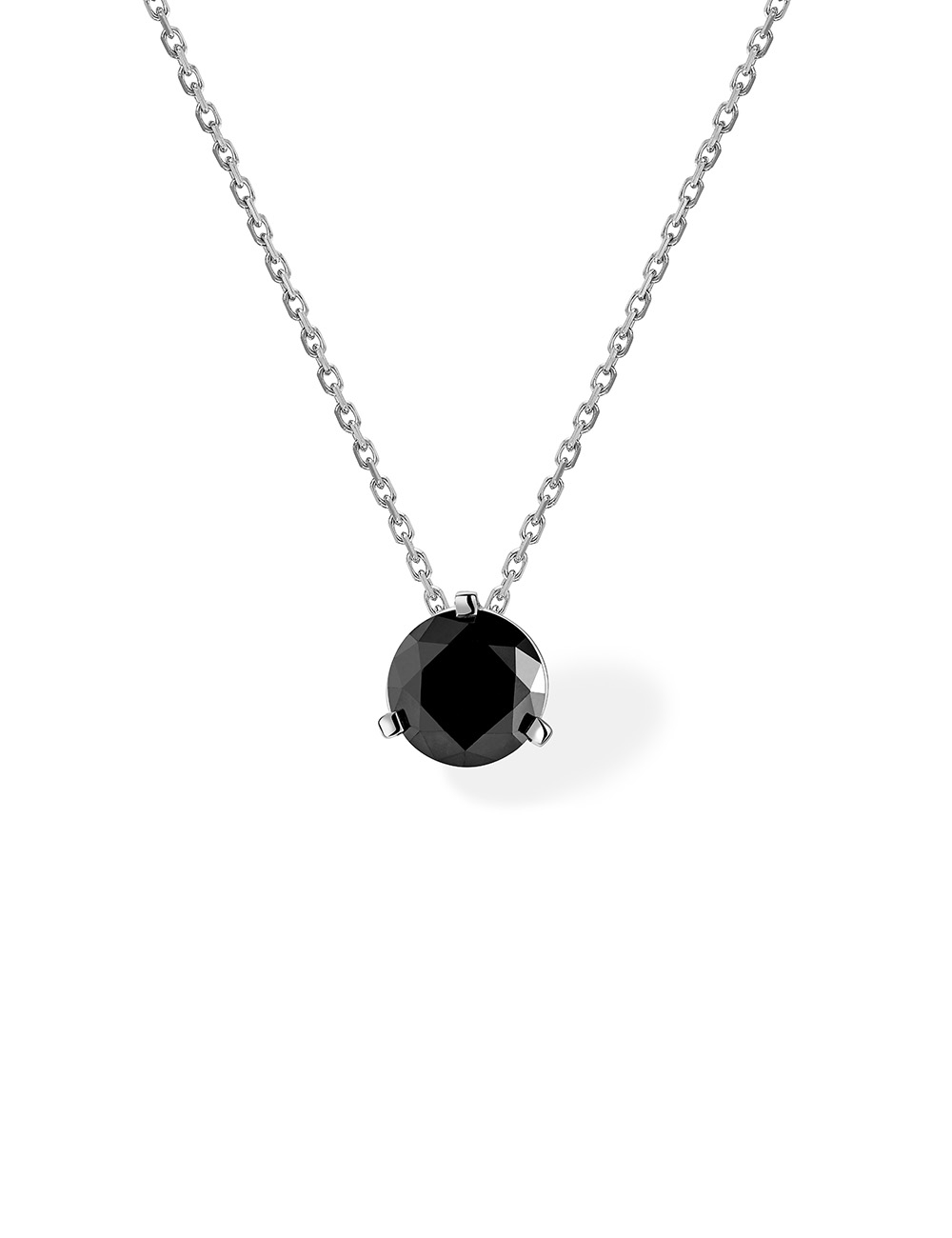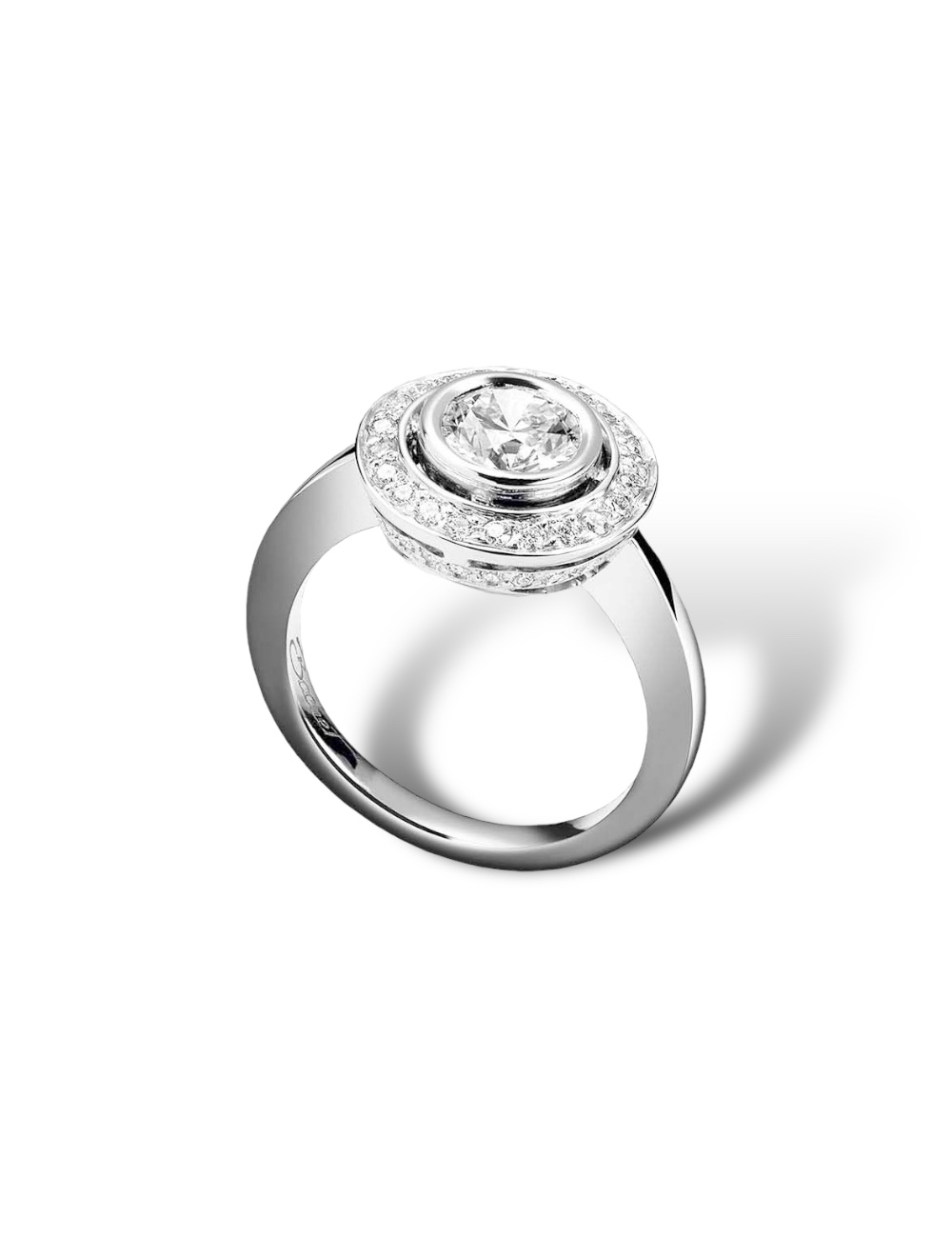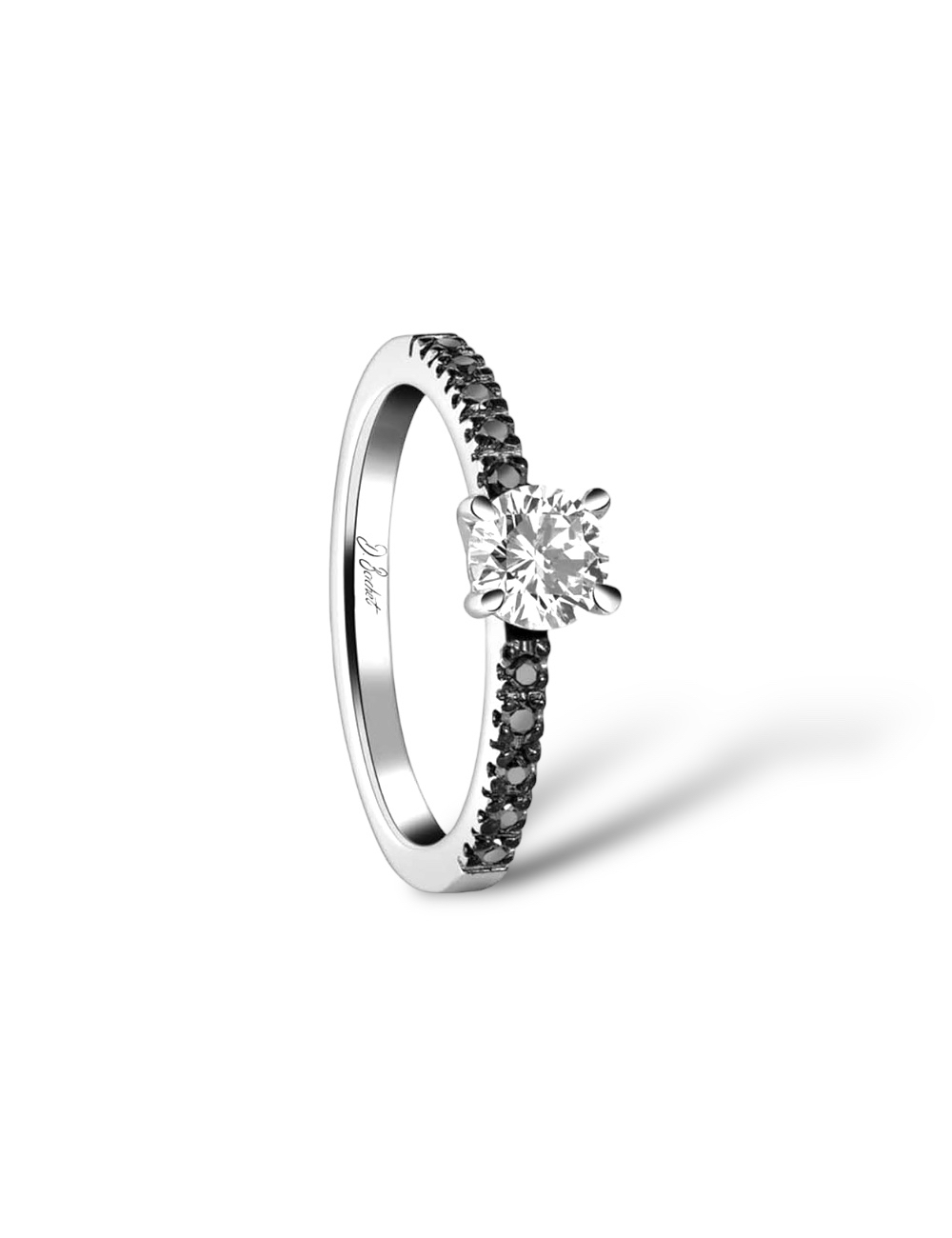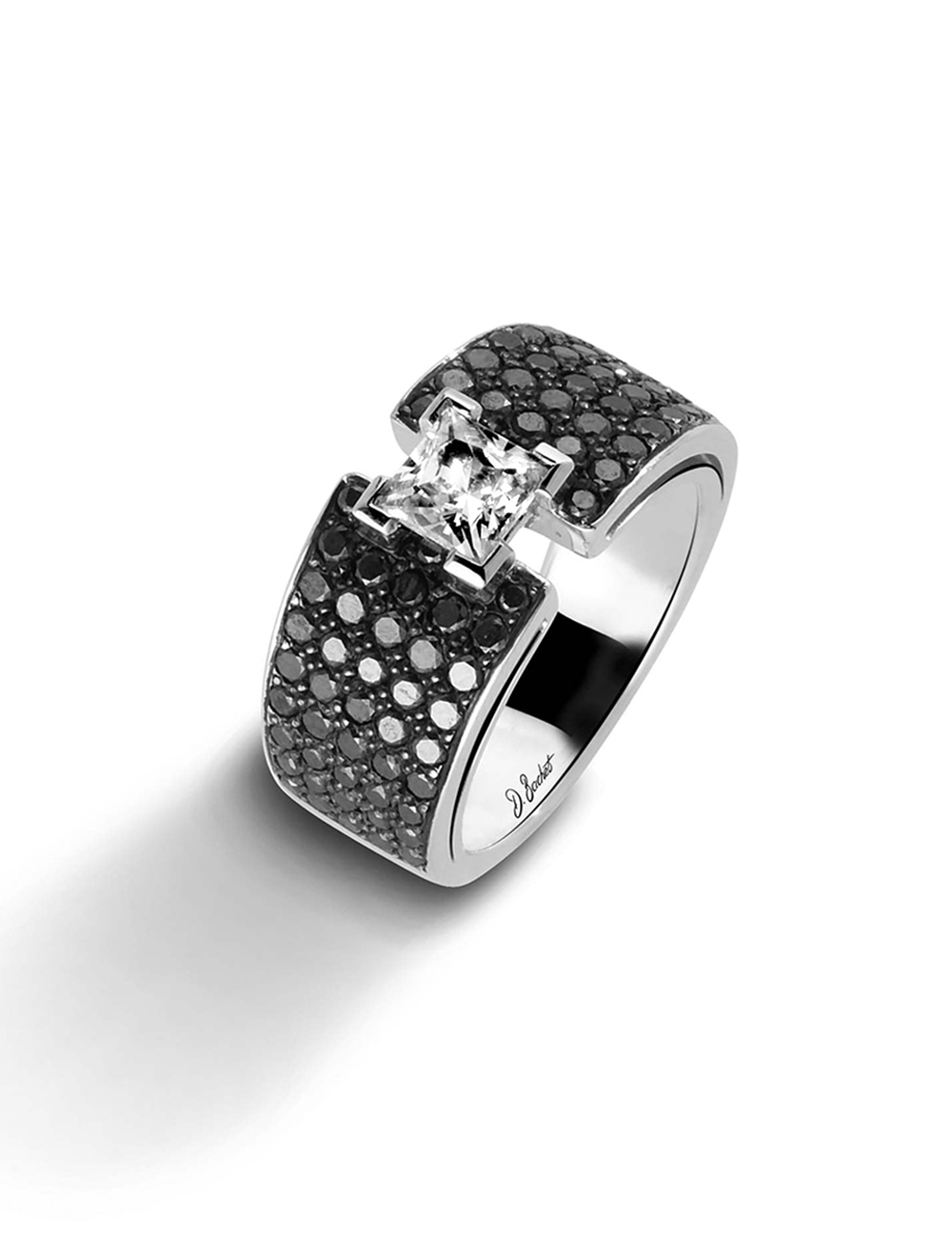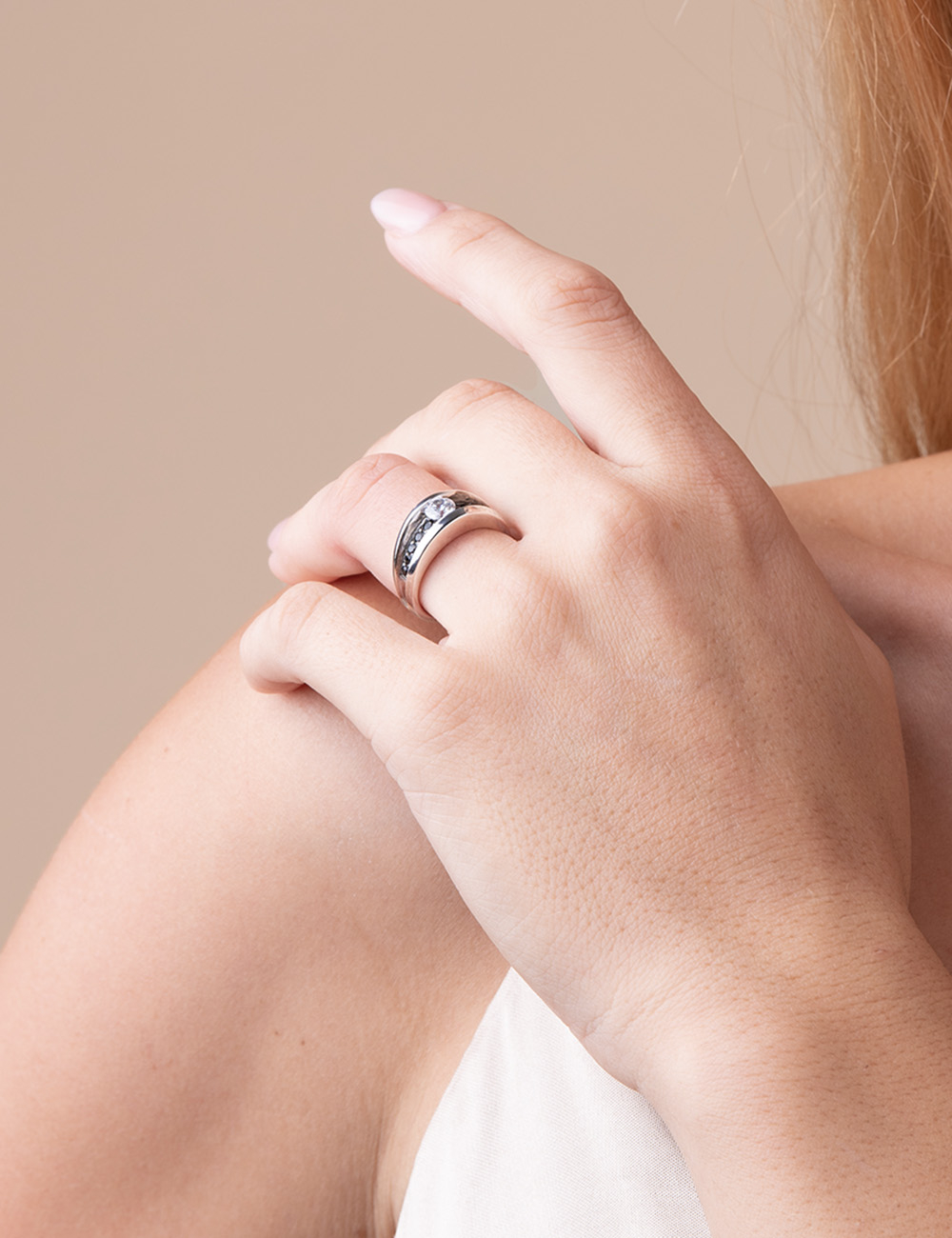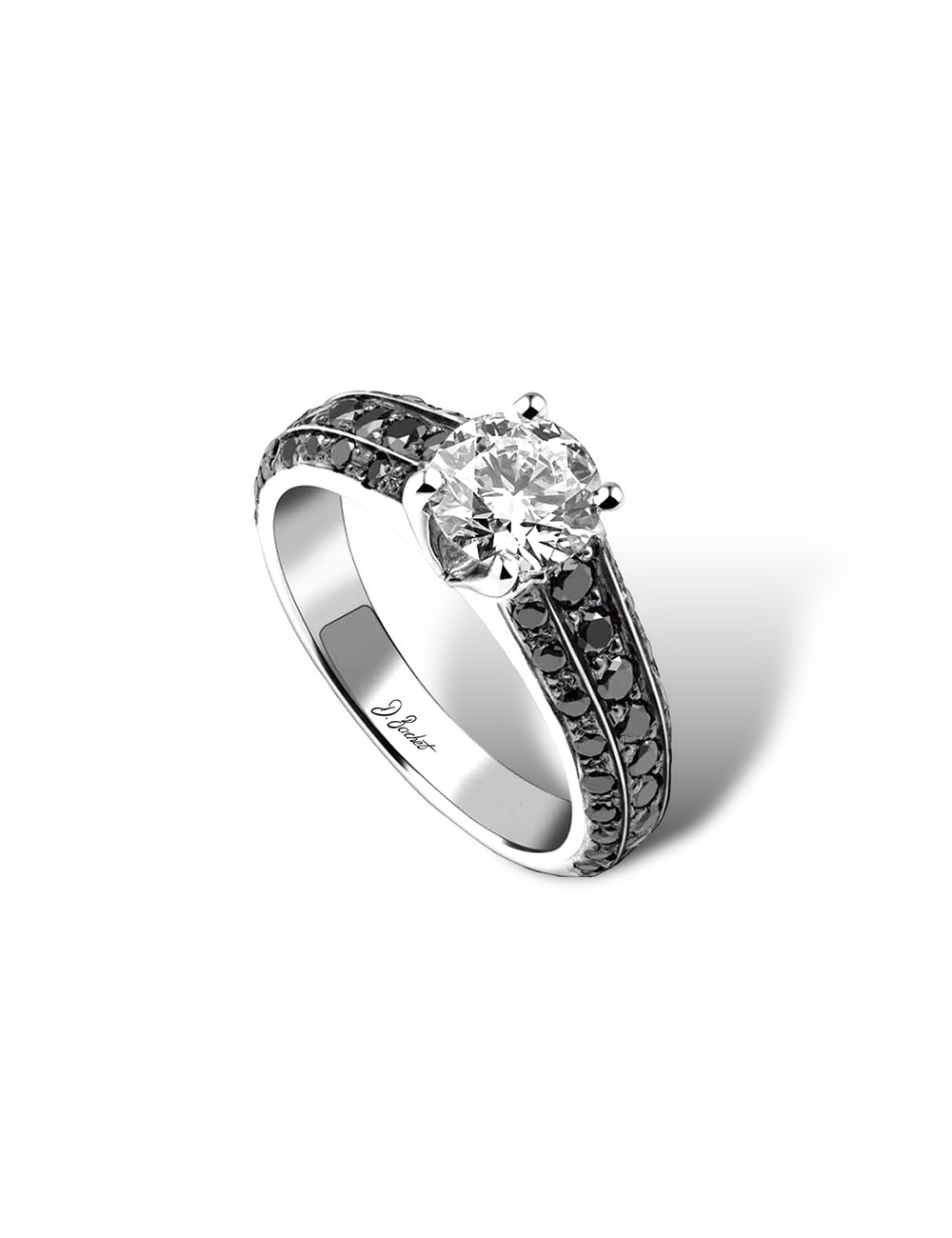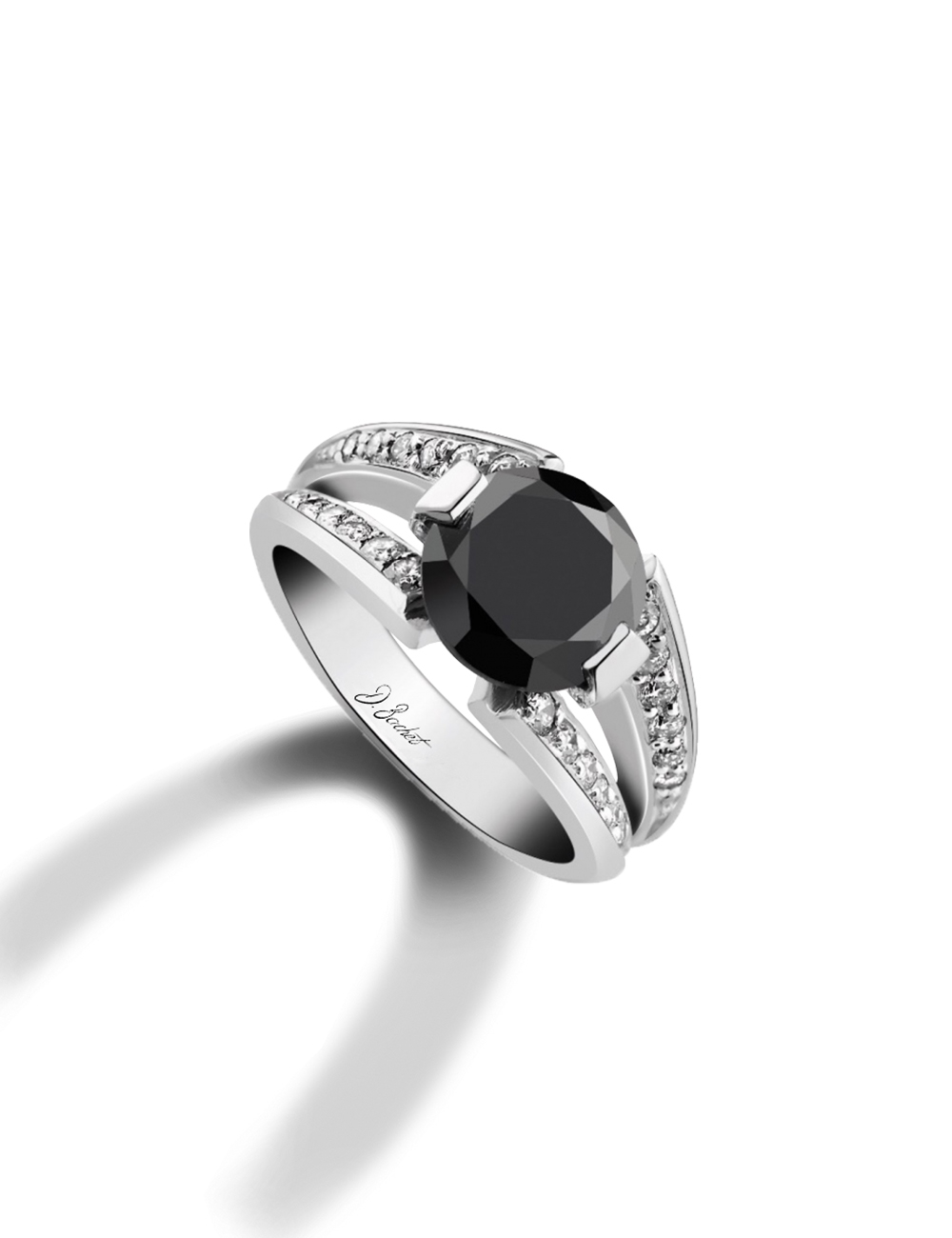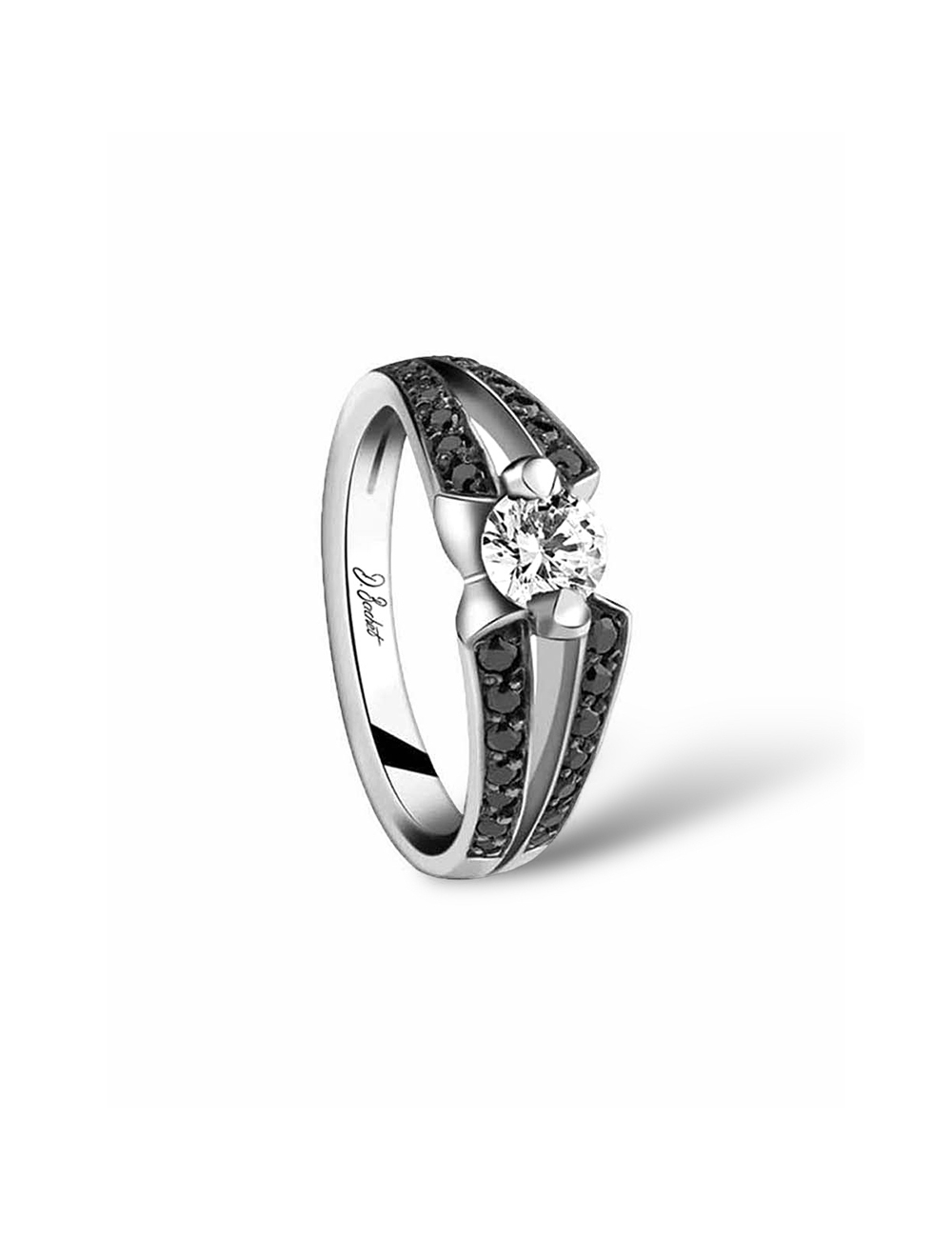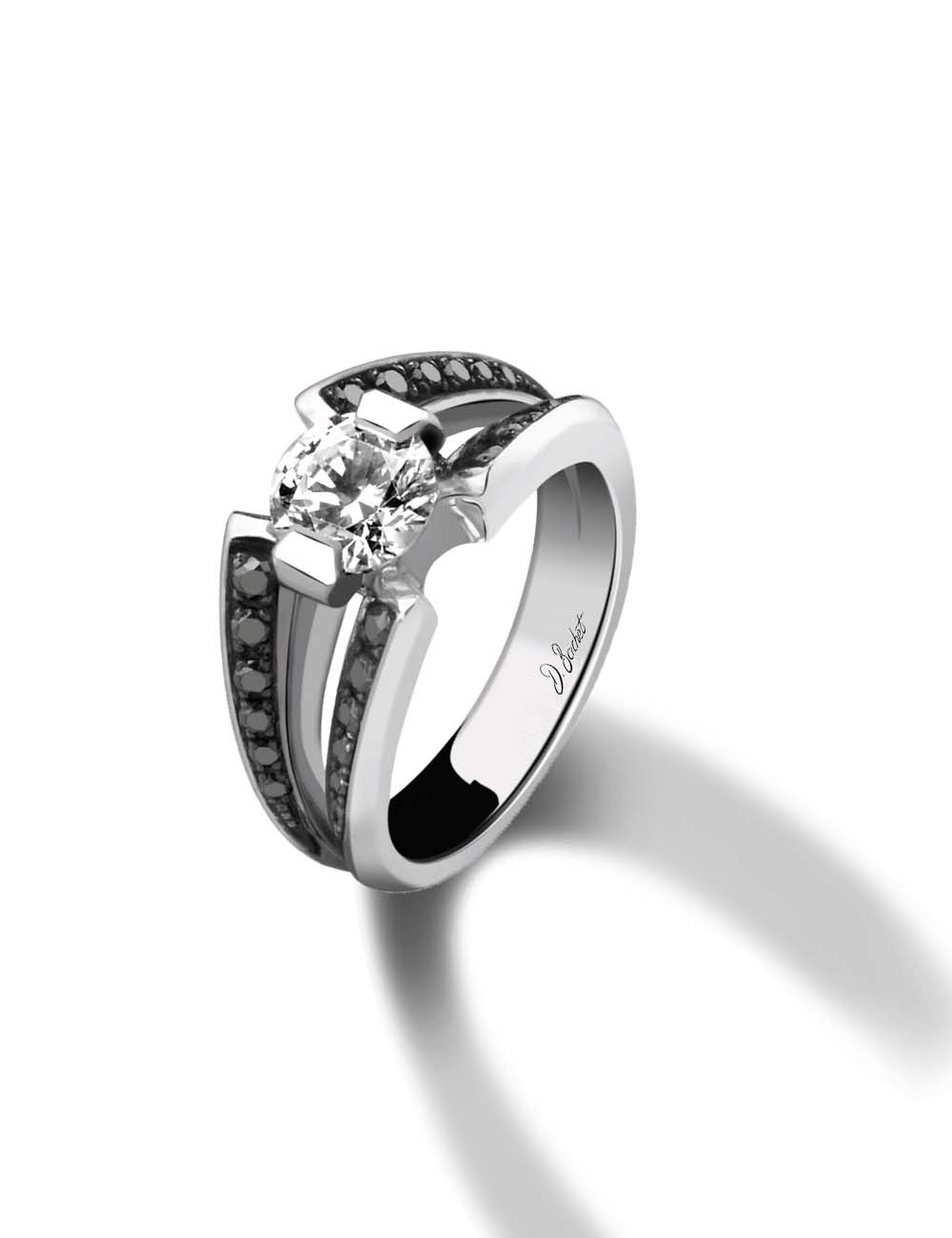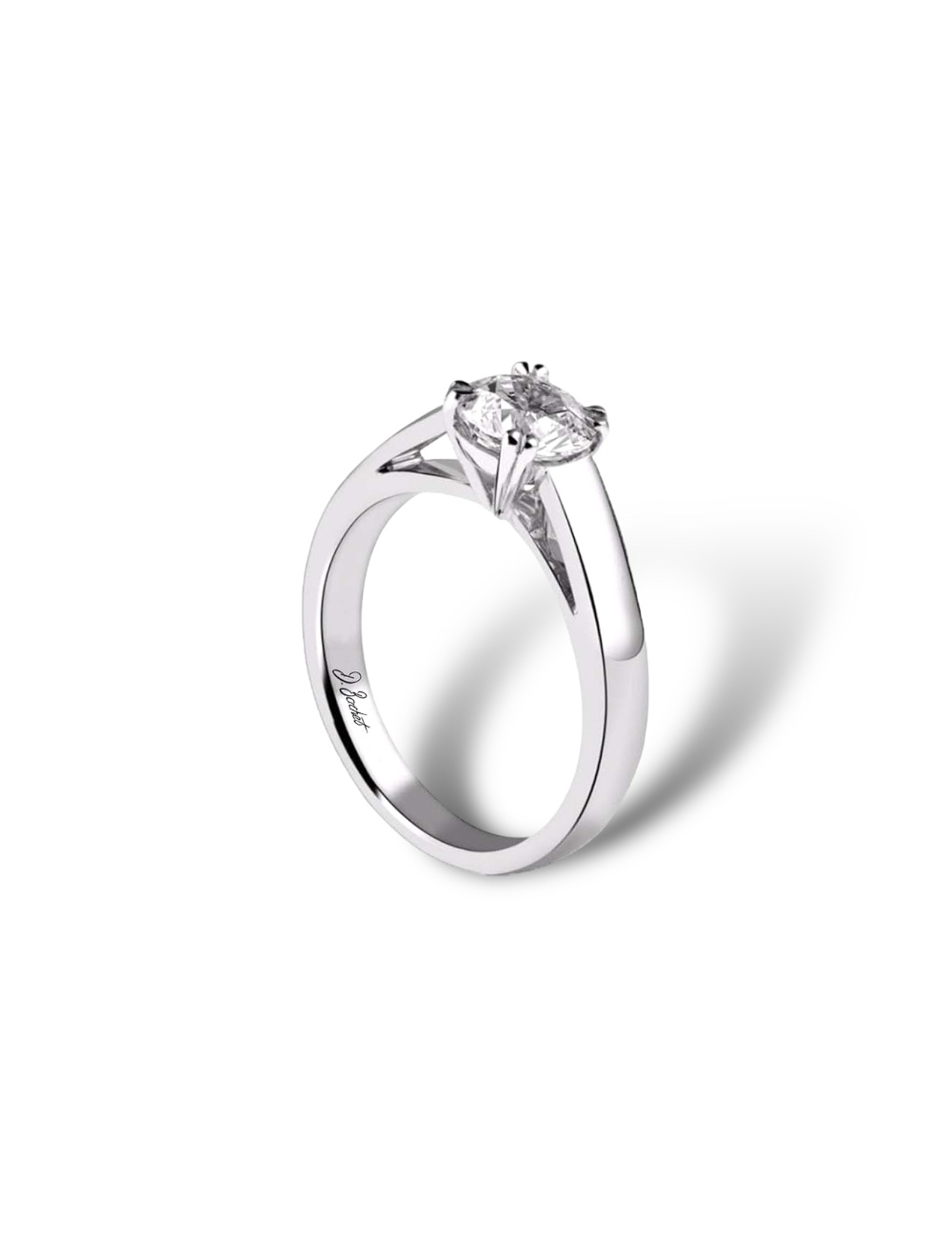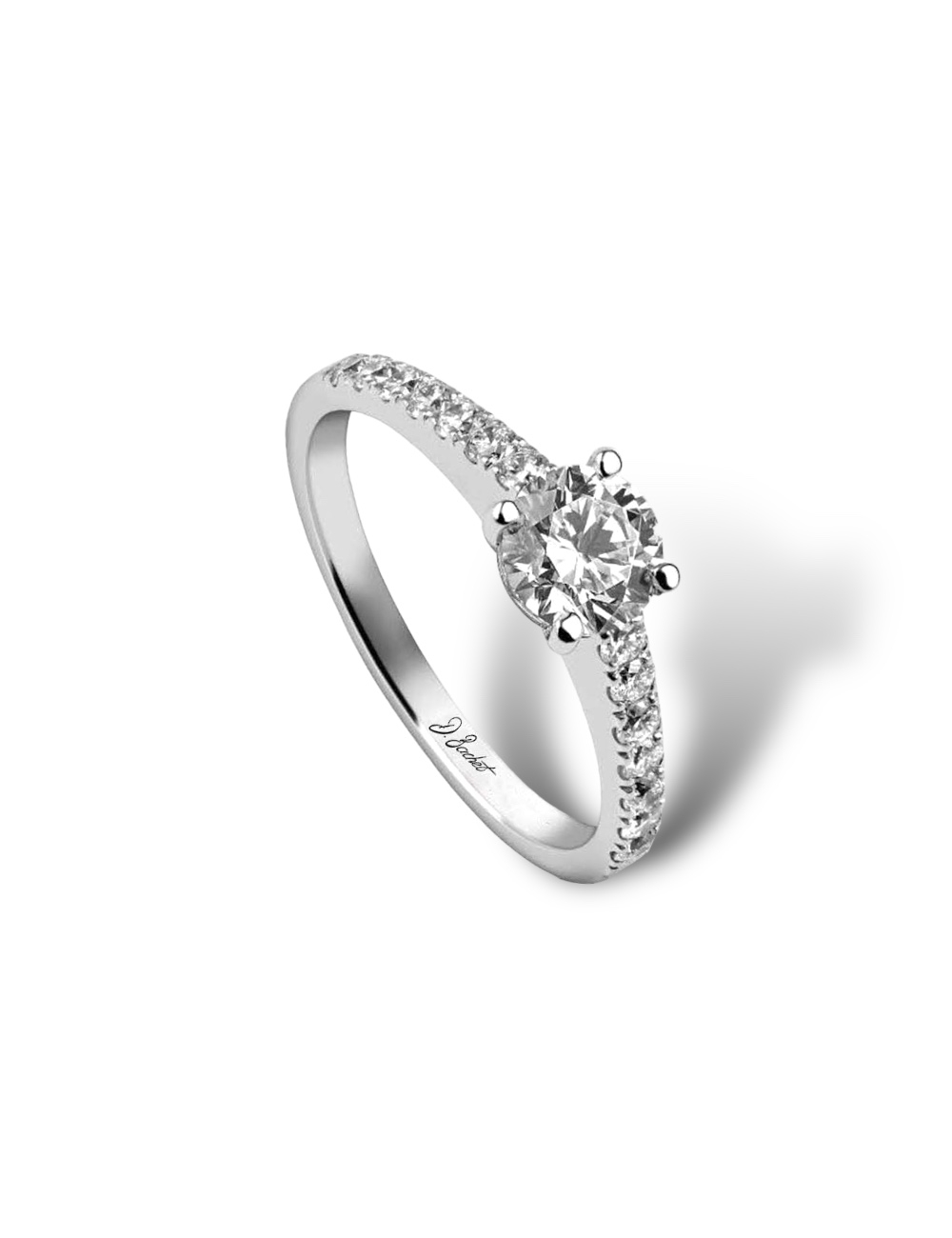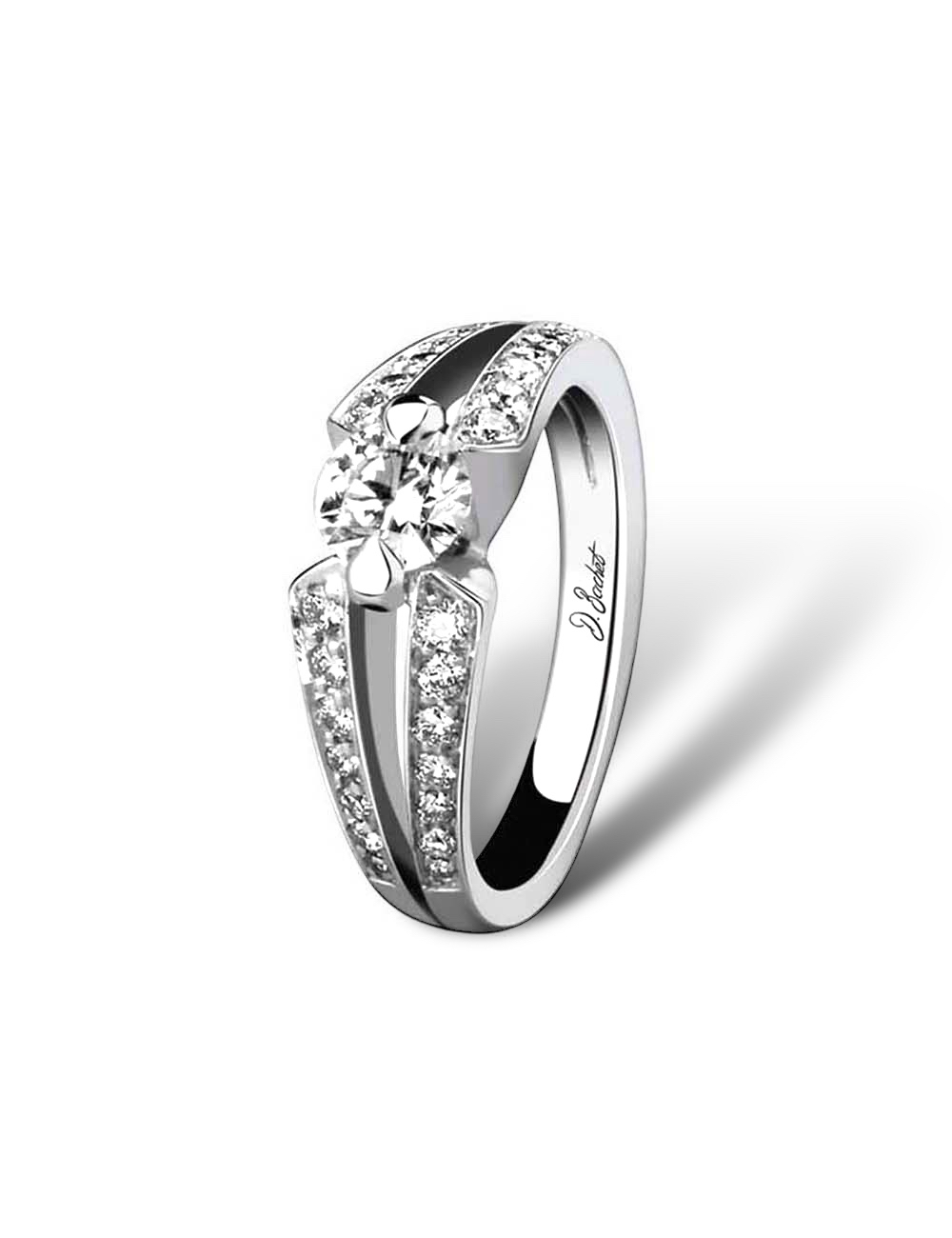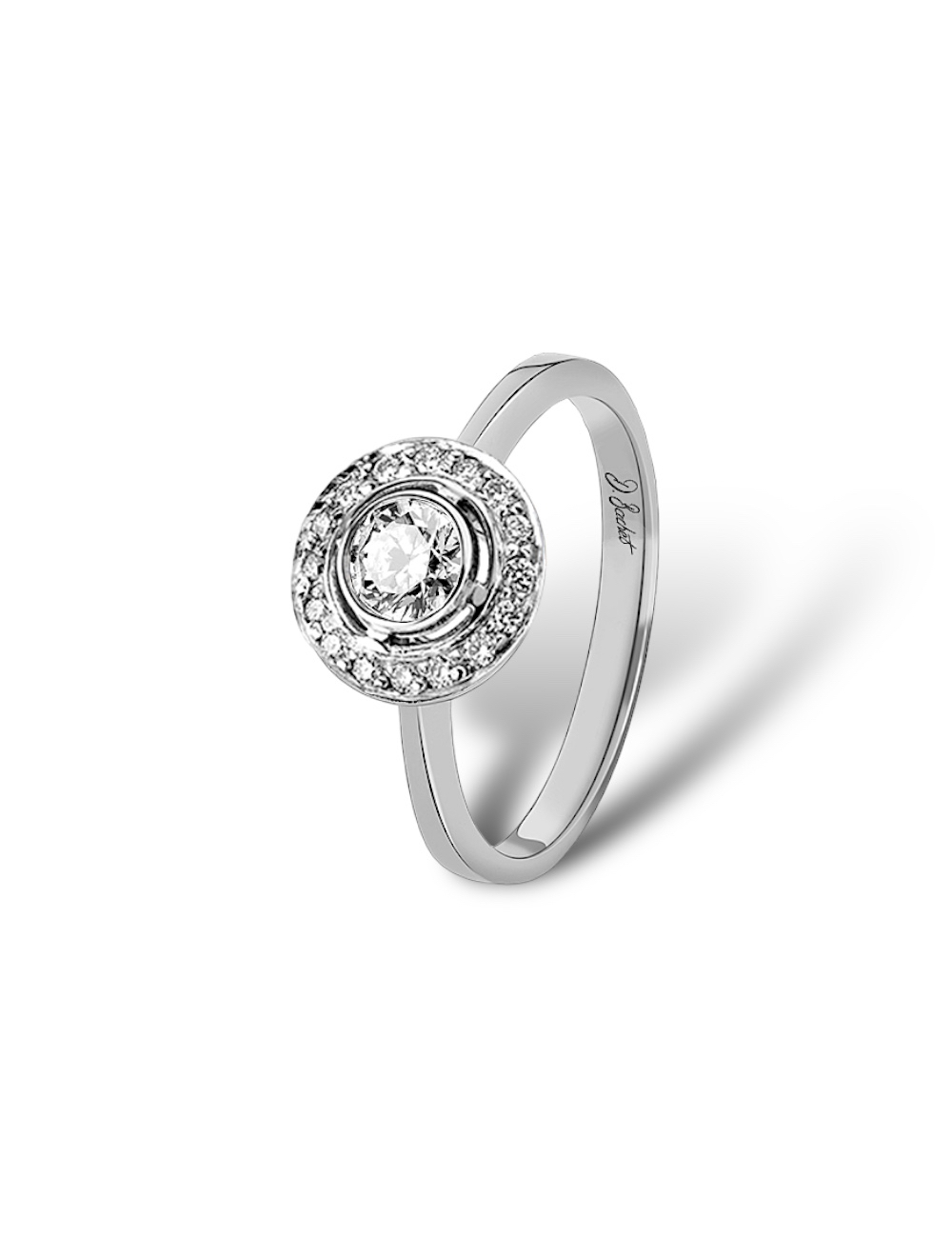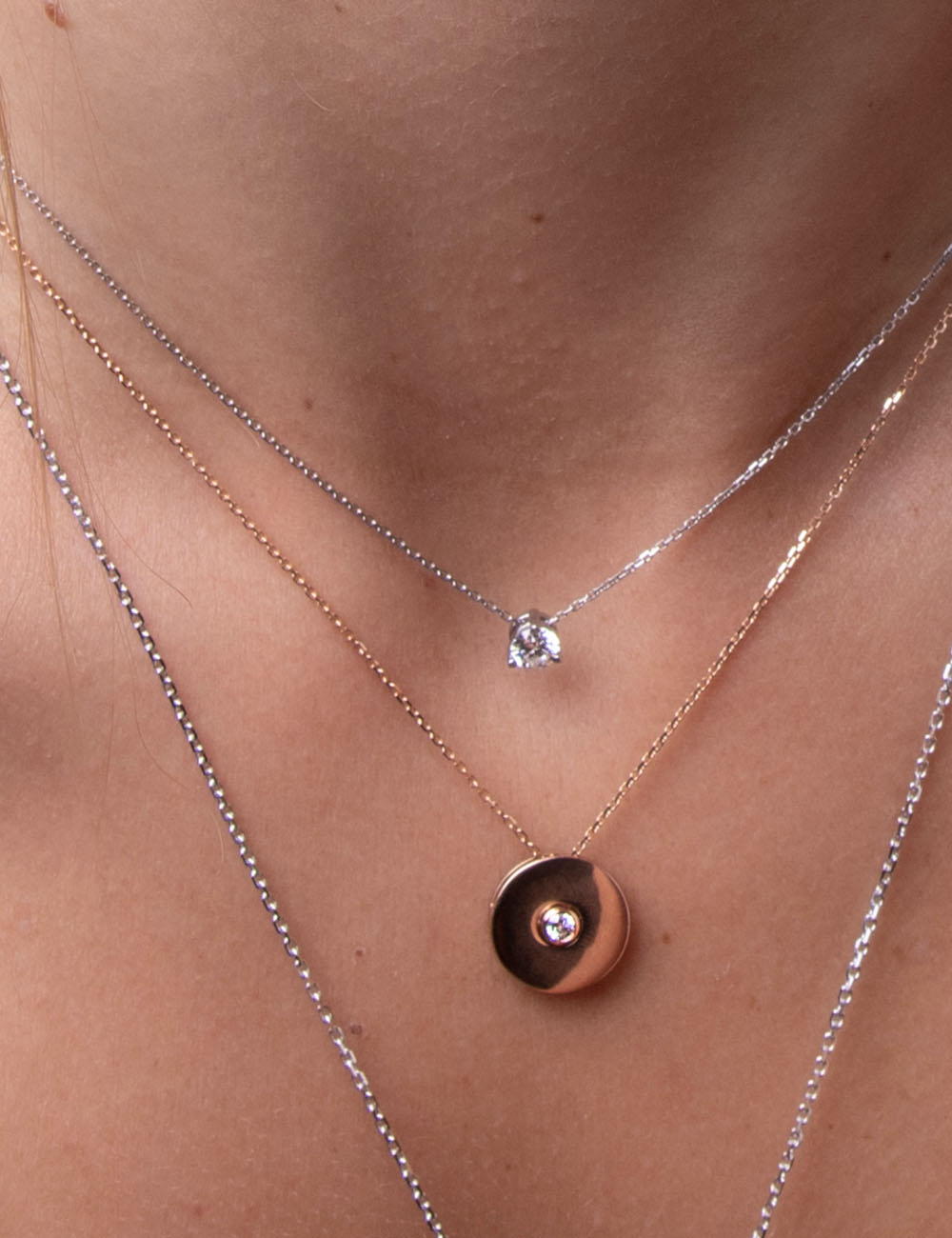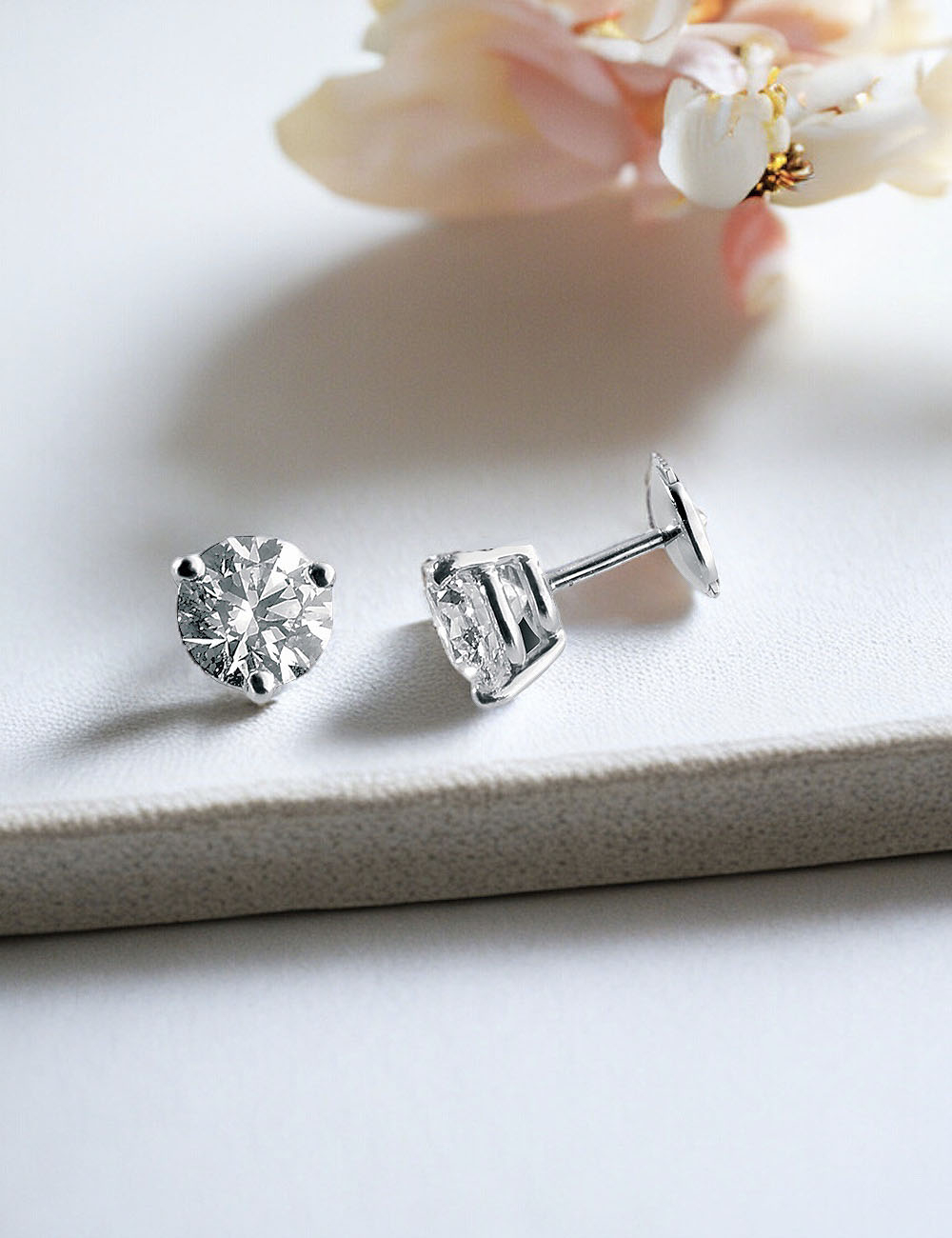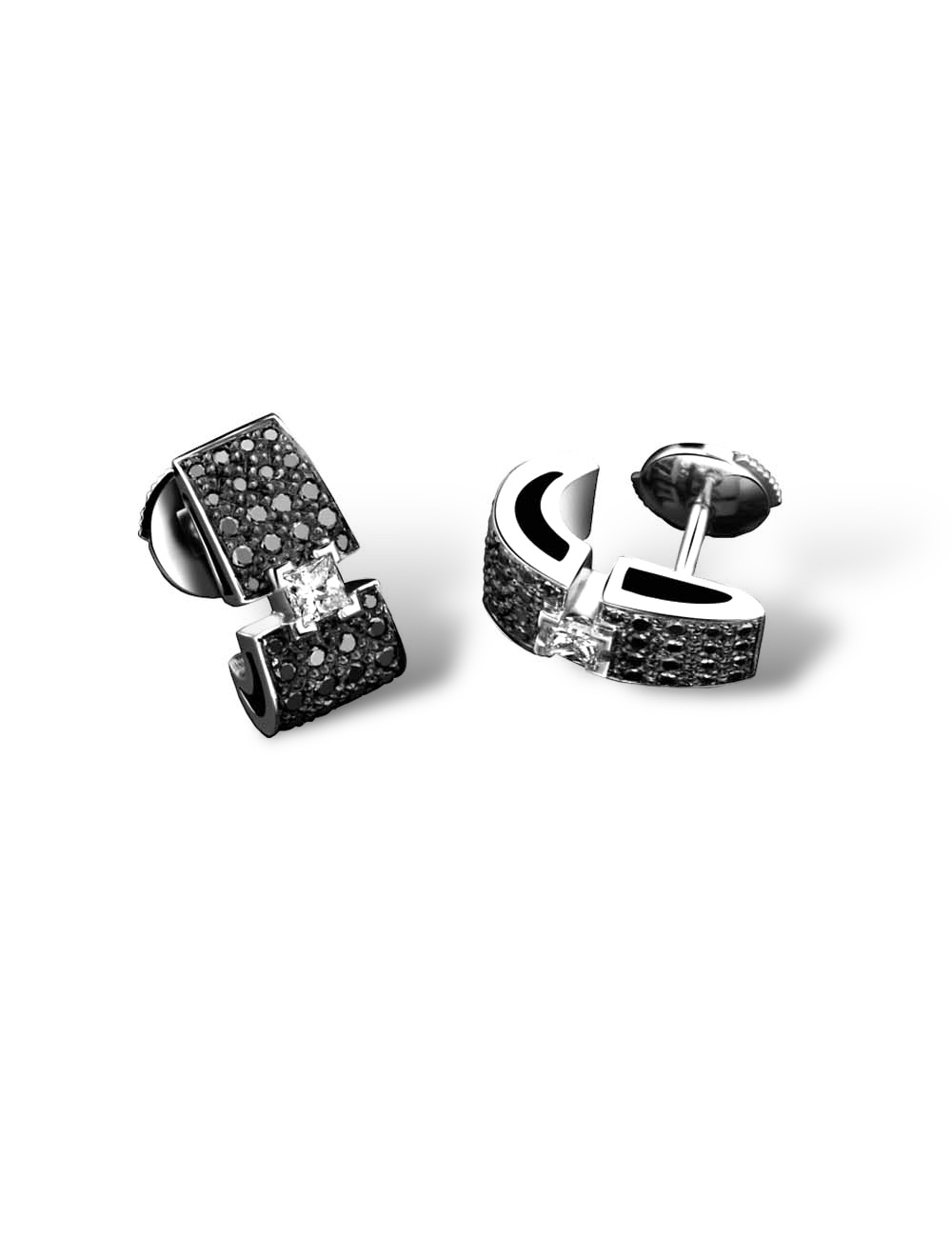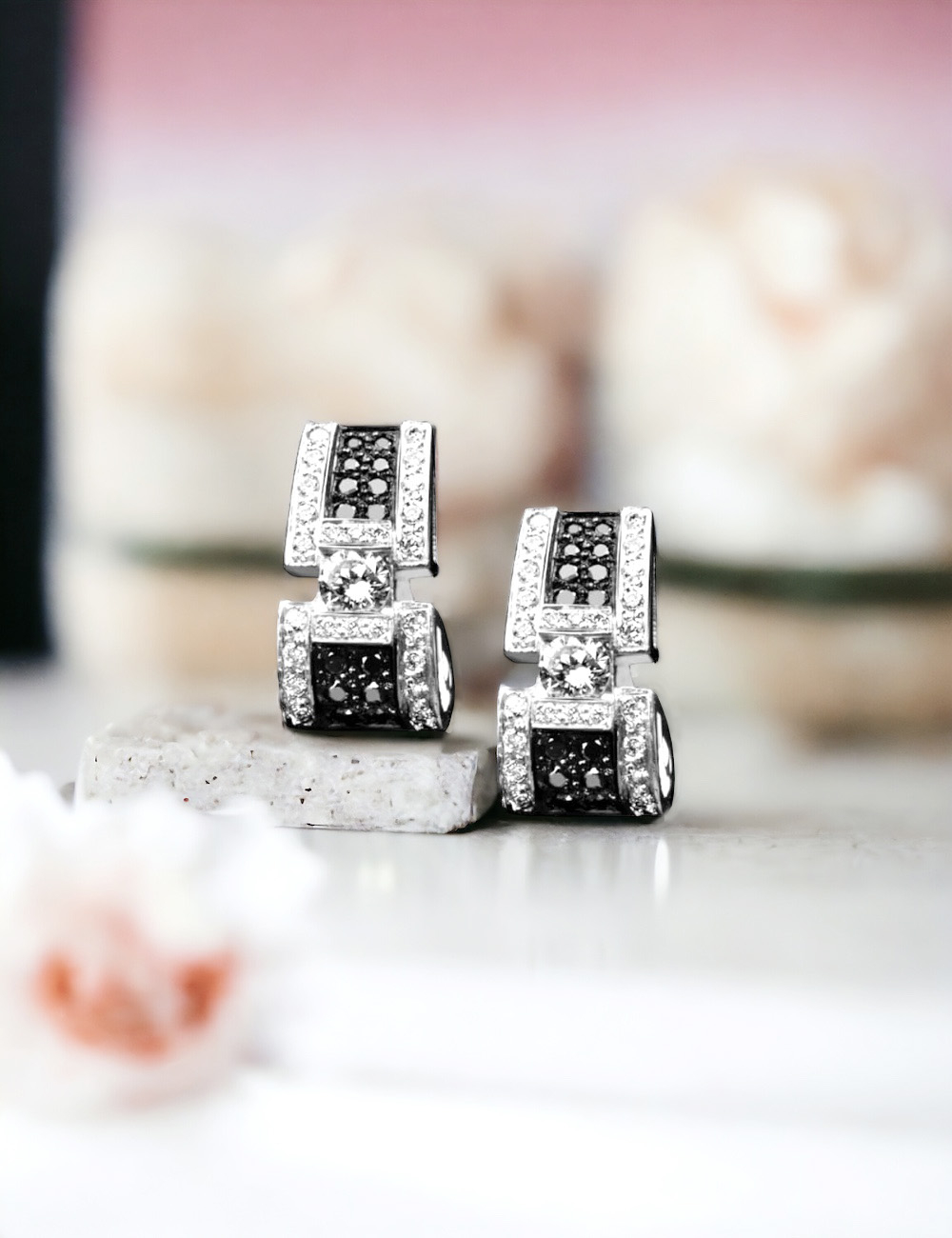Everything You Need to Know About Diamonds: Origins, Symbolism, and Ethical Practices


Natural Diamonds, Essence of Maison D.Bachet’s Jewelry
For millennia, the diamond, with its unparalleled hardness, has captivated and fascinated people. Etymologically derived from the Greek word "adamas," meaning "invincible," the diamond is more than just a jewel; it is the ultimate symbol of eternal love and purity. Let’s explore the evolution of this precious stone from ancient tools to engagement jewels and how Maison D.Bachet enhances this tradition with modernity and ethics.
Historical Evolution of the Diamond
Early Uses of Diamonds
Initially, diamonds, known for their unmatched hardness, were used as tools rather than ornaments. This precious stone was primarily utilized to cut and polish other gems due to its superior resistance to abrasion.
Historical records indicate that as early as the 2nd century, diamonds began capturing the imagination of human civilizations, not only for their hardness but also for their unique brilliance and light reflection. With the advancement of cutting techniques over centuries, their incorporation into jewelry became increasingly refined, marking the beginning of their use as symbols of status and beauty.
Diamonds as Royal Gifts
Historically, access to diamonds was reserved for royalty and the aristocracy, making this stone a symbol of power and privilege. This exclusivity took a romantic turn in 1477 when Archduke Maximilian of Austria chose to give his fiancée, Mary of Burgundy, a ring set with a diamond to seal their engagement. This gesture is considered the origin of the tradition of diamond engagement rings. The influence of this gesture was so significant that the use of diamonds as the ultimate expression of love quickly spread among the European upper classes.
The symbolism of the diamond as a representation of eternal and indestructible love was reinforced by this practice, which eventually transcended European borders to become a globally recognized standard in engagement and wedding rituals. Over the centuries, this tradition has evolved, but its essence remains the same: diamonds have become a token of enduring and precious love.
Their rarity and brilliance make them perfect for marking the most significant occasions in life. The way these gems are integrated into jewelry has continued to evolve, with innovations in cutting and setting that today allow for the maximization of their sparkle and fire.
Maison D.Bachet continues to perpetuate this tradition by incorporating diamonds into contemporary creations that honor both their historical heritage and deep symbolism.
The Fascinating Genesis of Diamonds on Earth
Natural Formation of Diamonds
Diamonds are a marvel of nature, formed from pure carbon under the extreme conditions of high pressure (up to 50 kilobars) and high temperature (up to 1000 °C) found in the Earth's mantle.
This remarkable transformation occurs over millions, if not billions, of years, deep below the Earth’s surface, between the Earth’s core and crust, representing 82% of our planet's volume.
The process of carbon crystallizing into a colorless diamond is not only fascinating but also highlights the rarity and precious value of each extracted diamond.
The Journey of Diamonds to the Surface
After their formation, diamonds undertake a spectacular journey to the Earth’s surface, driven by rare volcanic rock eruptions.
They are then extracted in their raw state before being meticulously cut and polished, transforming these raw gems into sparkling precious stones that captivate the world.
History and Early Uses
The first documented use of diamonds dates back about 4000 years in India, where they were initially valued for their incredible hardness and used to cut other precious stones.
Their discovery not only revolutionized tool usage but also laid the foundation for their status as symbols of wealth and power.
Ethical Practices in Diamond Mining and Trade
Where Do Diamonds Come From Today?
Although India was the first major center of diamond production, today, deposits are exploited on various continents, notably in Africa, Russia, Canada, and Australia.
The provenance of diamonds is meticulously controlled, ensuring that each precious stone comes from regulated industrial mines that adhere to strict social and environmental responsibility standards.
The Importance of the Kimberley Process
To combat the trade of conflict diamonds, the Kimberley Process was established, ensuring that the sale of diamonds does not finance armed conflicts.
Maison D.Bachet is firmly committed to adhering to this process, ensuring that every marketed diamond is certified, thus respecting human rights and promoting responsible business practices.
D.Bachet’s Commitment to Transparency
At D.Bachet, we advocate total transparency regarding the origin of our diamonds, ensuring that each stone meets not only international quality standards but also the strictest ethical criteria. Our diamonds, whether white, black, or colored, are selected with the utmost rigor, each being certified to reflect not only timeless beauty but also the integrity of its source.
Fundamentals of Diamond Evaluation: The 4Cs Explained
To determine and define the quality of a white diamond or a colored diamond, the method known as the 4Cs, established by the Gemological Institute of America (GIA), is used.
Before its introduction in the mid-20th century, there was no universal standard, making diamond purchases often subjective.
Characteristics of White and Colored Diamonds
The Gemological Institute of America (GIA) revolutionized diamond evaluation by creating the first globally accepted standard, now universally recognized, based on the "4Cs": Carat, Cut, Color, and Clarity. These criteria today constitute the universal method for evaluating the quality of diamonds worldwide.
The 4Cs of Diamonds
Carat – Weight
A diamond's weight is expressed in carats, which corresponds to one-fifth of a gram, or 2 decigrams: thus, 1 carat = 0.20 grams.
The diamond is weighed using an extremely precise electronic microbalance that captures the weight to the fifth decimal place (the nearest ten-thousandth of a carat). An optical measuring device is used to determine the proportions, measurements, and angles of the diamond's facets.
It should be noted that the weight of a diamond is not linear. A 1-carat diamond is not twice as large as a 0.50-carat diamond, barely 25 to 30% larger, but is worth more than double.
Cut – Shape
The cut refers to the angles and proportions of a diamond.
This is a determining criterion as diamonds are renowned for their ability to reflect light and sparkle intensely from one facet to another. We talk about the cut of a diamond in terms of shape (round, oval, pear, or heart), but what the diamond cut actually means is how the diamond's facets interact with light.
Originally, a diamond is rough, meaning it does not shine and has a geometric shape. Art and meticulous work are required to shape a stone so that its proportions, symmetry, and polish offer high light refraction.

The diamonds of Maison D.Bachet are selected with an Excellent cut.
Color – Shade
The color for a white diamond
This classification of a white diamond's color corresponds to the first letter found in the three letters that define a diamond's characteristics like DIF, GVS orHSI.
As a sign of purity and rarity, the less color (pure white) a diamond has, the higher its price will be.
The GIA color scale ranges from D (exceptional white) to Z (light yellow).


The white diamonds of Maison D.Bachet are selected with colors ranging from D to F, which means exceptional white.
The color for a colored diamond
The GIA report indicates the color grade and origin (natural or treated).
Unlike white diamonds, the more intense the color of a colored diamond, the more valuable it is. Intense and vivid colored diamonds are the rarest.
SWhile the color of white diamonds is graded from D to Z by the GIA, colored diamonds (Fancy Color Diamonds) have their own classification linked to their color.
Did you know:
The rarest and most precious colors are saturated pinks, blues, and greens.
In all cases, even very slight color differences can significantly impact the value.
The GIA grading of colored diamonds is complex and specialized, designed to account for the fact that not all colored diamonds have the same depth of color. Colored diamonds have a range of color intensity, from the least pronounced color (Fancy Light) to more intense and vivid (Fancy Vivid).

Clarity – Purity
Because white and colored diamonds formed deep in the earth under extreme heat and pressure, they have unique birthmarks, internal (inclusions) or external (blemishes).
A clarity scale has been established by the GIA to classify diamonds according to their degree of purity, from excellent purity (Flawless) to the least pure (Included).

These inclusions are observed with a 10x loupe or binocular microscope as they are not visible to the naked eye. International standards have established that a diamond is considered "pure" when an expert's eye detects no flaws under 10x magnification.
The diamonds of Maison D.Bachet are selected with clarity ranging from Flawless to VS.
The 5th C of Maison D.Bachet
Maison D.Bachet recognizes the importance of the traditional 4Cs for evaluating a diamond’s quality—Carat, Cut, Color, and Clarity—but we go beyond with our distinctive approach we call the "5C."
This fifth component encompasses three essential criteria that are often overlooked but significantly impact a diamond's quality and appearance: polish, symmetry, and lack of fluorescence.
Polish : The polish of a diamond is crucial as it directly affects the stone's brilliance and fire. Impeccable polishing maximizes the reflection of light on the diamond’s surface, enhancing its overall sparkle. At D.Bachet, every diamond is polished with extreme precision to ensure a perfectly smooth surface, free of microscopic defects that could diminish its brilliance.
Symmetry : Symmetry refers to the alignment and proportion of a diamond’s facets. Perfect symmetry is essential for light to pass through the diamond and be refracted optimally, creating maximum brilliance. We meticulously evaluate the symmetry of each diamond to ensure that every facet is harmoniously aligned, contributing to the overall beauty of the stone.
Absence of Fluorescence : The fluorescence of a diamond can affect its color when the stone is exposed to UV light. Diamonds with strong fluorescence may appear whiter in certain lighting conditions, but this can also cause a milky or oily appearance under sunlight. At D.Bachet, we prefer diamonds without fluorescence (noted as "none" in GIA reports), ensuring the purity of color and clarity of the stone under all light sources.
Maison D.Bachet's commitment to these additional standards underscores our dedication to offering diamonds of the highest quality, with meticulous attention to details that truly define luxury and excellence.

GIA Certificate White Diamond

GIA Certificate Colored Diamond
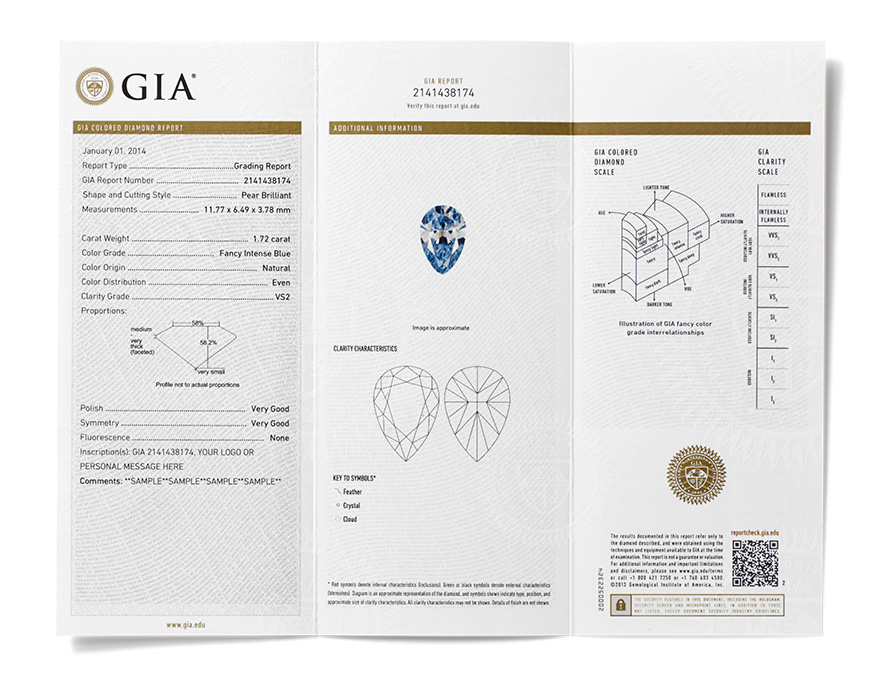
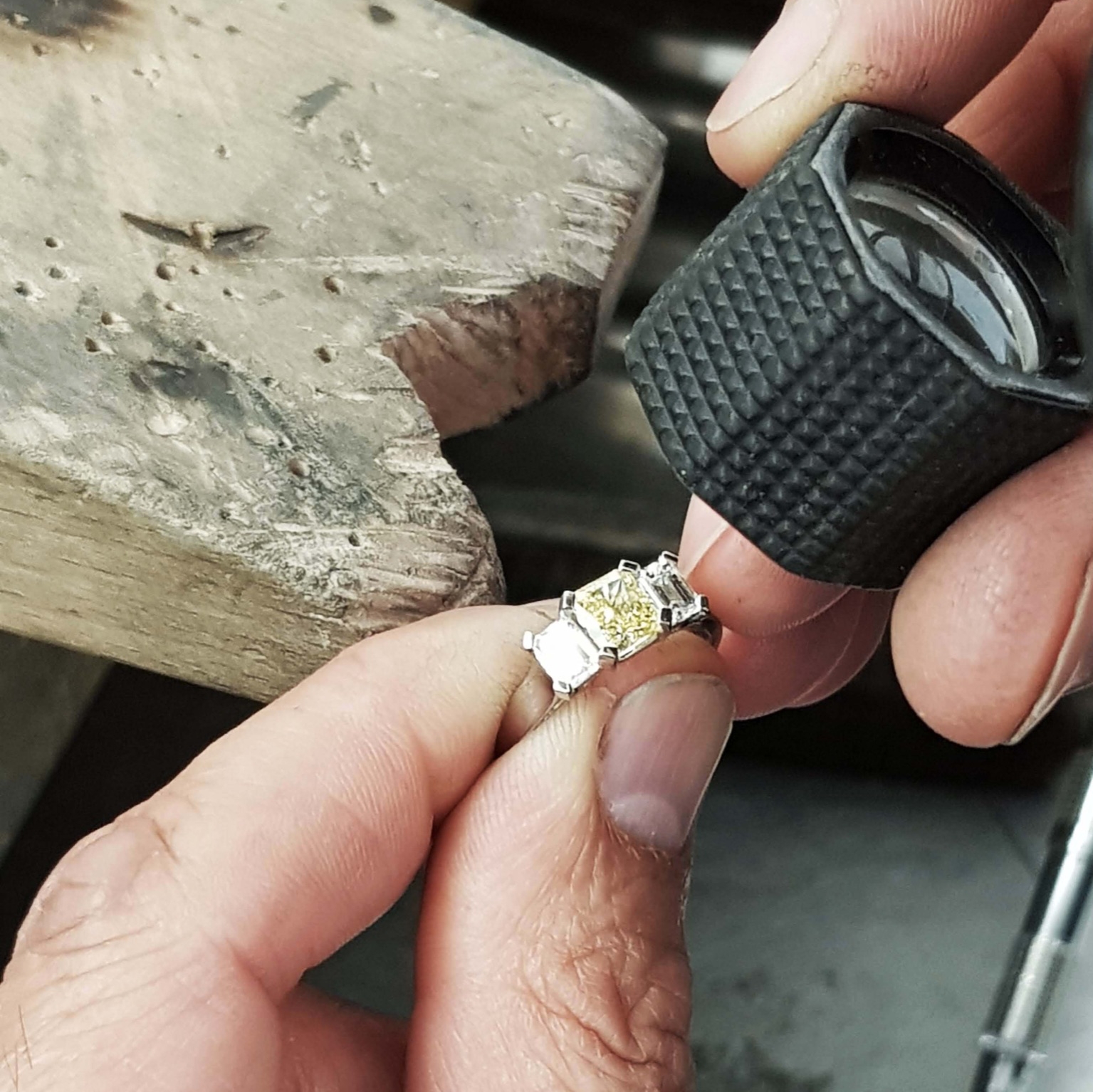
Engagement ring set with a cushion-cut yellow diamond
end two emerald-cut white diamonds
The Characteristics of Black Diamonds
The mysterious beauty of black diamonds intrigues, offering a striking contrast with white diamonds in jewelry creations like rings, necklaces, and earrings, for both women and men.
Evaluation and Quality of Black Diamonds
Intensely black diamonds are not very common in nature, and consequently, most are treated to achieve a uniform and homogeneous black color.
The black diamonds in the creations of Maison D.Bachet are natural diamonds of brown or gray color, selected according to quality criteria and then heated to achieve their deep, intense, and homogeneous black color.
Guarantee of Perfection
Due to their opacity, the famous 4Cs used to evaluate the quality of white and colored diamonds do not apply to black diamonds.
Instead, a quality scale ranging from A, AA to AAA is used, meaning that the cut, polish, and symmetry are rated as excellent, or AAA.
With these criteria met, the homogeneous color and intensity of the black are assured.
Our black diamonds are exclusively of AAA quality.

Engagement Ring BlackLight Sweet
set with a 1-carat black diamond
The jewelry of Maison D.Bachet is not just creations; they are the result of craftsmanship handcrafted in our workshops in France, embodying exceptional know-how that respects a sustainable model. Each piece is meticulously crafted, reflecting our unwavering commitment to quality and luxury.
At D.Bachet, the selection of our diamonds is a process imbued with responsibility. We carefully select each white, black, or colored diamond, ensuring that all our supplies are ethical and respect human rights, in accordance with the Kimberley Process. This attention to detail ensures that every piece of jewelry we offer not only adorns but also conveys deep values.
We invite you to discover our exclusive collections, where ethics meet elegance. Explore the universe of Maison D.Bachet and let yourself be seduced by a jewel that tells a story as rich and precious as its stones. Discover our collections here.
